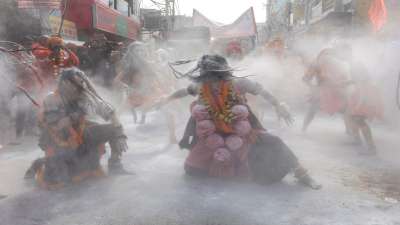Naga Sadhus: The history of Naga Sadhus (Naga Sadhus) is very old; evidence of the heritage can be found in the coins and paintings of Mohenjo-Daro in which Naga Sadhus are shown worshiping Lord Shiva in the form of Pashupatinath.
Naga Sadhus are revered ascetics who are known for their intense spiritual practices and complete renunciation of worldly possessions.
During the Maha Kumbh Mela, they play a prominent role, symbolizing the spirit of devotion and penance. Their presence adds a mystical layer to the fair, which attracts pilgrims and tourists alike.
It takes a lot of courage and commitment to become a Naga Sadhu, as they cannot use worldly things to adorn their bodies; they can rub ash on their bodies and that will be their adornment.
Naga Sadhus cannot wear clothes, they wear only a saffron cloth, that too does not cover the whole body. They also observe strict celibacy and follow a sattvic diet.
The unique lifestyle and rituals of Naga Sadhus make them a central attraction and a reminder of the profound spiritual significance of the Maha Kumbh Mela.
Naga Sadhus play an important role in the Maha Kumbh Mela, especially during the Shahi Snan, a sacred ritual that recognizes their spiritual significance.
As the sun rises over the sacred rivers, Naga Sadhus march in processions accompanied by chanting, drums and conch sounds that are associated with their traditions.
The Naga Sadhus originated in ancient India when they set out as warrior-ascetics to protect the Sanatan Dharma. Naga Sadhus had swords, tridents, maces, bows and arrows and armament skills to protect temples.
The Naga Sadhus successfully protected Shiva temples from invaders and Mughals. Their dual identity as warriors and spiritual seekers is still maintained in their practices today.
 Indian Thought Latest News & Views
Indian Thought Latest News & Views


